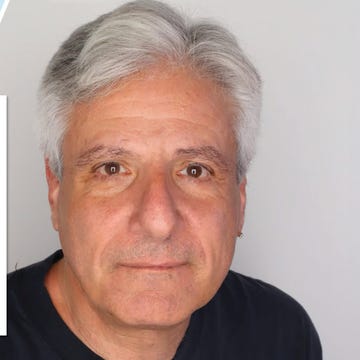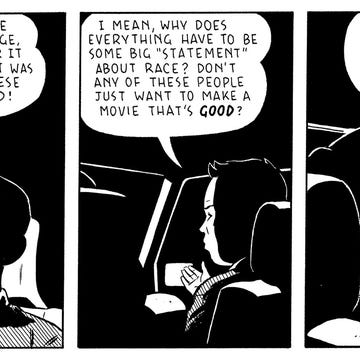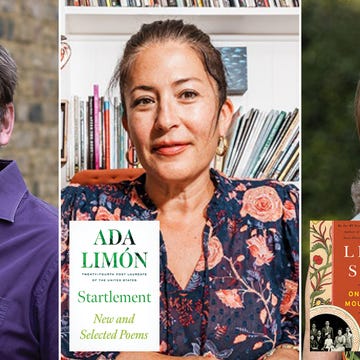Naomi Hirahara worked for years as a reporter and an editor at the Rafu Shimpo, a Japanese American newspaper based in Los Angeles, and has penned an array of books, including Hiroshima Boy and Terminal Island: Lost Communities of Los Angeles Harbor—this amounts to roughly 30 years exploring Japanese American history. It’s no surprise that her first historical mystery, Clark and Division, the California Book Club August selection, is as realistically detailed as it is engrossing.
The novel tells the story of Aki Ito, a 20-year-old Japanese American woman who is released (along with her parents) from Manzanar and builds a new life in Chicago. Although the Ito family is fictional, the Ito family members’ story is in line with very real experiences Japanese Americans went through after wartime confinement, in a period known as resettlement. To render the lives of the family, Hirahara used a tremendous amount of research: articles, journals, photographs, books, and first-person accounts. After you read Clark and Division, take a closer look at some of the resources investigated to make this novel historically rich and accurate.
After Camp: Portraits in Midcentury Japanese American Life and Politics, by Greg Robinson
This volume of case studies explores a lesser-known period in American history: Japanese American people’s rejoining of society following their confinement during the war. Robinson (who also authored The Great Unknown: Japanese American Sketches) fills in gaps in official history by focusing on the often-overlooked struggles Japanese immigrants and their American-born children suffered while assimilating back into American culture, with their attendant emotional and physical challenges. In Clark and Division, we are privy to Aki’s inner thoughts and her effort to remake her life after camp, thoughts we also see expressed in the case studies by Robinson.
Life After Manzanar, by Naomi Hirahara and Heather C. Lindquist
This book comes from the author herself and her close friend Lindquist, the editor of the award-winning Children of Manzanar. Hirahara and Lindquist piece together detailed stories of previously incarcerated families by way of new and archival histories, shedding light on the resettlement and postwar era. This inspiring book is divided into four parts: the immediate effects Japanese Americans experienced after confinement, the long-term effects of having had to leave everything behind, the nation’s reaction to the tragedy, and the work to prevent anything of this magnitude of horror from happening again. The level of detail in this nuanced account is similar to the level of detail we are given as we follow the Ito family from California to Chicago.
When Abortion Was a Crime: Women, Medicine, and Law in the United States, 1867–1973, by Leslie J. Reagan
The first of its kind, this significant book chronicles abortion from the mid-19th century to the landmark Roe v. Wade case in 1973—it’s an essential read for anyone interested in the history of abortion. The work contains information on arrests made in 1940s Chicago, and it details the heavy stigma women who had abortions dealt with. Reagan, a history professor at the University of Illinois Urbana-Champaign, uses trial transcripts, inquest records, and intimate stories, and she dispels some commonly believed myths surrounding the medical procedure.
Japanese Americans in Chicago, by Alice Murata
Murata, who arrived in Chicago from Poston Relocation Center in southwestern Arizona and is a professor emeritus and a founding board member of the Chicago Japanese American Historical Society, has written numerous pieces on the children of Japanese immigrants in Chicago. In this book, she gathers more than 200 photographs. Chicago’s Japanese American community is laid bare through firsthand experiences. Spanning four generations, these images portray Chicago’s allure: the opportunities it promised, the diversity of the people residing within, and the acceptance more easily obtained in this area. These vintage images provide a visual overview of what the Ito family would have seen during resettlement.•
Join us on August 17 at 5 p.m., when Hirahara will appear in conversation with California Book Club host John Freeman and a special guest to discuss Clark and Division. Register for the Zoom conversation here.
FRAGMENTATION AND ERASURE
Kimiko Guthrie (Block Seventeen) writes that through the character of Aki Ito, Hirahara performs a “transdimensional surgery” of what was shattered in the families of Japanese Americans as a result of incarceration. —Alta
WEIRD MOMENTS OF MOTHERHOOD
Zan Romanoff profiles Edan Lepucki, whose third novel, Time’s Mouth, features generations of women who time-travel through their memories. —Alta
SEQUEL TO “CLARK AND DIVISION”
Hirahara’s new book, Evergreen, also featuring Aki Ito, was released on August 1. —Rafu Shimpo
ESSENTIAL TEXTS
Palm Springs novelist Tod Goldberg (Gangsters Don’t Die) compiled a stellar list of 75 books that have shaped Gen Xers’ sense of the world and how they see themselves. —Arrow
HUMAN CREATIVITY
Suzanne Nossel, CEO of PEN America, supports the Hollywood writers’ and actors’ strikes, which have implications for all humans. She reasons that the shift that AI may create “toward a secondhand, machine-made entertainment landscape risks undercutting the catalytic role that culture, at its best, can play.” —New Republic
LITERARY LIFE
Zyzzyva’s editor in chief, Oscar Villalon, shares his journey to welcome writers to the Community of Writers in Olympic Village. —Omnium Gatherum Quarterly
Alta’s California Book Club email newsletter is published weekly. Sign up for free and you also will receive four custom-designed bookplates.



















